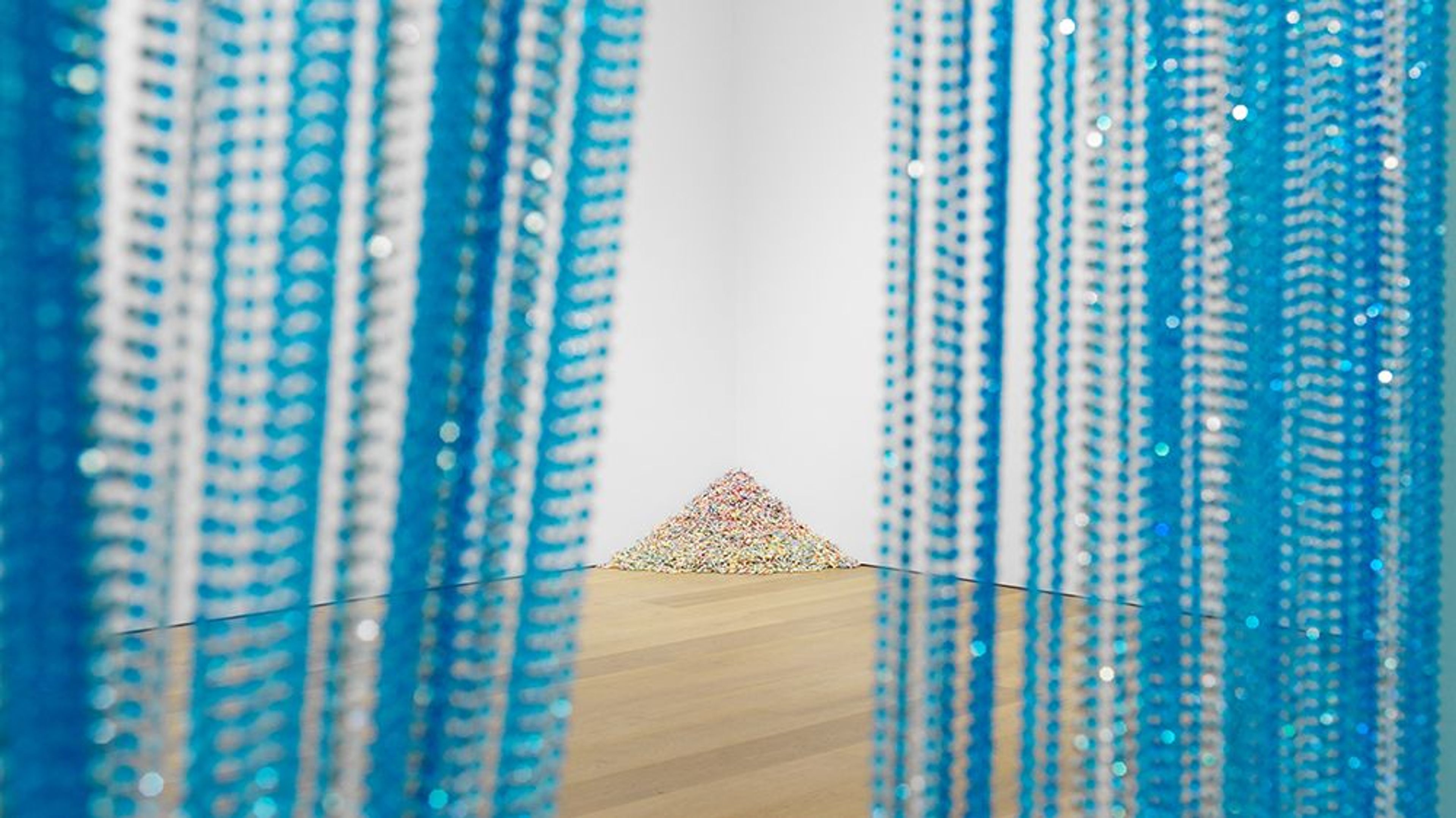"My work cannot be destroyed," artist Felix Gonzalez-Torres told curator Nancy Spector in 1995. "I destroy the work before I make it." Between permanence and impermanence, the fleeting now and the heavy forever, where does art reside, and how does a work survive? This isn't only a question propelling Gonzalez-Torres, but one that hangs over an elegant and contemplative exhibition at David Zwirner, transforming the cold majesty of the Chelsea gallery space into an airy cathedral charged with the work and spirit of an artist who, since his death in 1996, has achieved a near-mythical status.
Gonzalez-Torres was born in Cuba in 1957 and moved to New York in 1979, graduating from both the Pratt Institute and the Whitney Museum's ISP program a few years later. Although trained as a photographer, he became known for installations that infused the stolid machismo of Minimalism with something it always seemed to lack: life force, generosity, humor. Rather than molten lead or bricks or polished steel, Gonzalez-Torres used candy, beads, and posters to create certain of his sculptures, and he invited his audience to take part by taking them. "Untitled" (Placebo-Landscape for Roni), from 1993, is composed of a long stream of gold-foil-wrapped hard candies lining the seam between the gallery's floor and wall; two stacks of paper ("Untitled," 1989/90)–one printed with the words “Somewhere better than this place,” the other “Nowhere better than this place”–lie side by side on the floor. This is all there for the taking; as mandated by Gonzalez-Torres, the gallery restocks the art as needed. It's a beautiful performance: art slowly atomizing into the world, disappearing and then regenerating, unable ever to be lost or destroyed.
